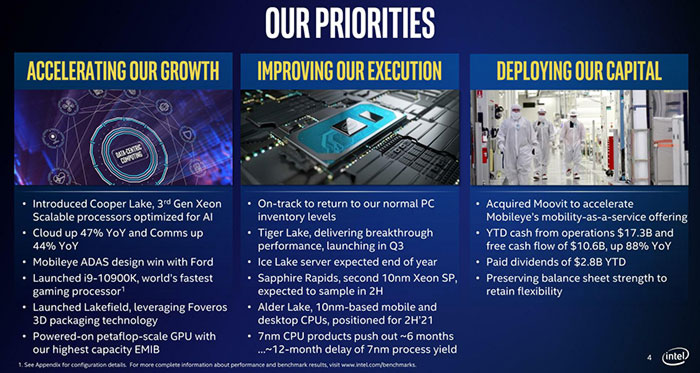A transcript of an analyst and investor call hosted by Susquehanna International Group, LLP (SIG) has been shared online. SIG describes itself as a "global quantitative trading firm founded with an entrepreneurial mindset and a rigorous analytical approach to decision making," and it specialises in the technology sector. SemiAccurate's Charlie Demerjian was on the call but a bullet pointed transcript seems to have been shared by a Redditor called uzzi38.
The discussion features quite a few interesting behind the scenes at Intel morsels. The information should be pretty solid, but remember this isn't official from Intel, so perhaps a pinch of salt or two should be applied. Starting with our headline, it seems that "Intel are looking for a new CEO." Will Bob Swan jump or is someone pushing? Apparently four candidates were shortlisted but one has so far been eliminated. It is currently expected that a decision about the new Intel leader will be made in Q1 2021.
SIG started by talking about Intel 10nm production which we know has been extremely difficult for the firm. It says that while 10nm SuperFin is far better than the base 10nm, yields are still on the low side. Cannon Lake had a yield of <25 per cent even with iGPUs disabled fo example, but current 10nm SuperFin processors have a >50 per cent yield, according to the transcript.
Moving onto 7nm, and the information in the call was that "7nm is significantly more delayed than the 6-12 months" claimed by Intel in Q2 this year (see slide below). Thus the Intel Xe-HPC GPU Ponte Vecchio (PVC) is in the hands of TSMC. As for the real length of the delay, it is thought Intel doesn't even know this because of multiple problems it is facing. In Q1 it is expected Intel will have a clear enough view of the scale of its own problems to decide which processors to outsource to the likes of Samsung and TSMC.

Last but not least there is some talk about AMD vs Intel. Interestingly SIG told investors something along the lines of "If both companies iterate perfectly on their roadmaps as planned (much easier on AMD's side right now), Intel cannot catch up to AMD until late 2024 or early 2025." AMD's largest issue is said to be simply securing enough capacity from TSMC.













